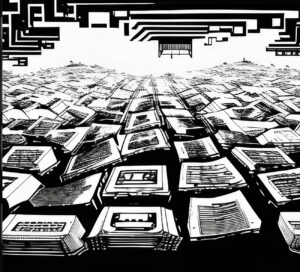Tokenomics vs Tokenization
If you’ve done any research on Web3, you’ve probably heard of the terms “tokenomics” and “tokenization.” While they may sound similar, they are two completely different aspects of the exciting blockchain and crypto universe. In this short article, we’ll explore the intriguing differences between tokenomics vs tokenization.
What is Tokenization?
Imagine being able to own a fraction of a luxurious beachfront property or a masterpiece artwork worth millions of dollars. Let’s face it, for most people, it is something we can only dream of. But with tokenization, we can now own a tiny slice of the pie. We’re talking about converting tangible assets into digital tokens that can be traded on the blockchain.
Tokenization is the process of converting assets into digital tokens that can be stored on a blockchain. From prime real estate to precious metals like gold, virtually any asset can be tokenized and stored on the blockchain. These tokens can then be easily bought, sold, or traded just like any other cryptocurrency. Tokenization has become increasingly popular in recent years as it provides a way to fractionalize ownership of assets. This means that investors can own a small portion of an asset that were once out of their reach.
Tokenization also offers greater liquidity as the tokens can be traded on secondary markets, creating a more efficient market for the asset. With tokenization, the world of finance is undergoing a massive transformation, and the possibilities are endless.
What is Tokenomics?
Now let’s talk tokenomics, the economic side of the crypto world. It’s all about studying how tokens work within a blockchain ecosystem. It takes into account factors such as the token’s supply, demand, and distribution.
In other words, tokenomics is understanding how the money flows within the crypto world. Just like how we keep an eye on our bank balance, we keep an eye on the supply and demand of tokens to understand their value. A well-designed tokenomics model can create a sustainable ecosystem where the token is used for its intended purpose. This can include incentivizing users to perform certain actions on the blockchain or providing benefits to token holders.
If you’re eager to delve deeper into the fascinating world of tokenomics, we’ve got you covered. Check out our previous article for more insights.
To sum it up…
Tokenization is all about turning real-world assets into digital tokens that we can trade on the blockchain.
Now, tokenomics is a little trickier, but it’s all about the value of these tokens. Think of it like the stock market, but for crypto. It’s all about supply, demand, and figuring out the worth of these digital assets.
So, why does this matter? Well, for anyone who’s looking to invest or get involved in the crypto world, understanding these two terms is crucial. Tokenization allows us to own a tiny slice of valuable assets, while tokenomics helps us understand how much that slice is worth.





